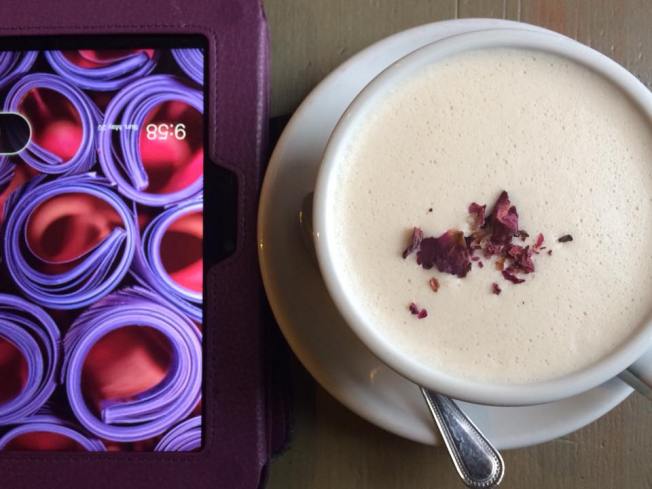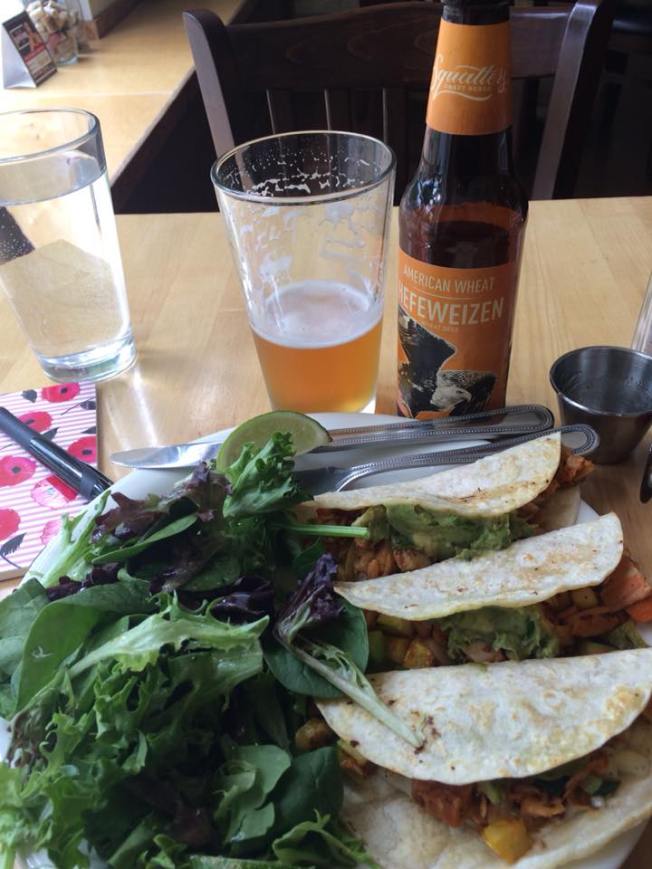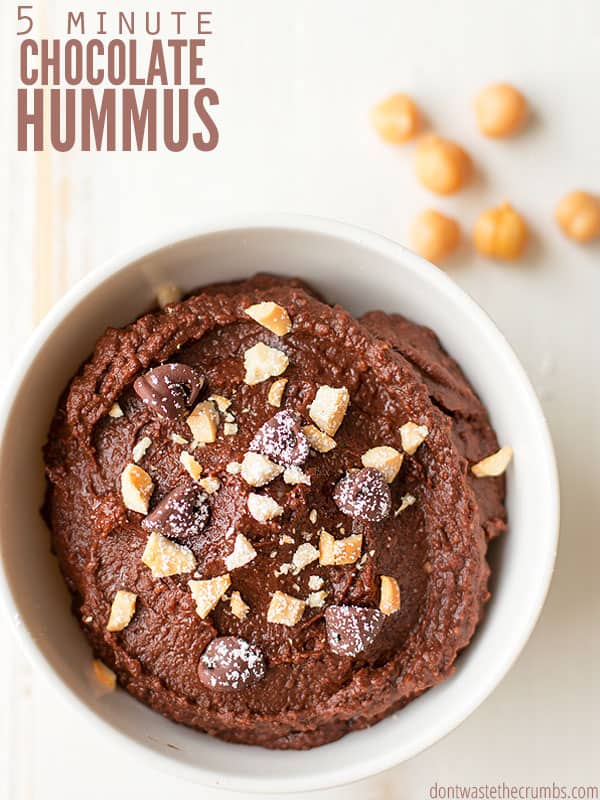This past weekend my gorgeous friend Jessica was given a baby shower. Jessica is having a healthy vegan baby and we all can’t wait to meet her! Jessica’s beautiful friend Emily, who’s not a vegan, took it upon herself to make all the amazingly delicious vegan appetizers for the baby shower. Let me tell you, they were DELISH! Thanks to all the original authors of these yummy recipes. The recipes are not mine, nor Emily’s or Jessica’s, but I believe the creators would be proud to see them and know how much they were enjoyed.
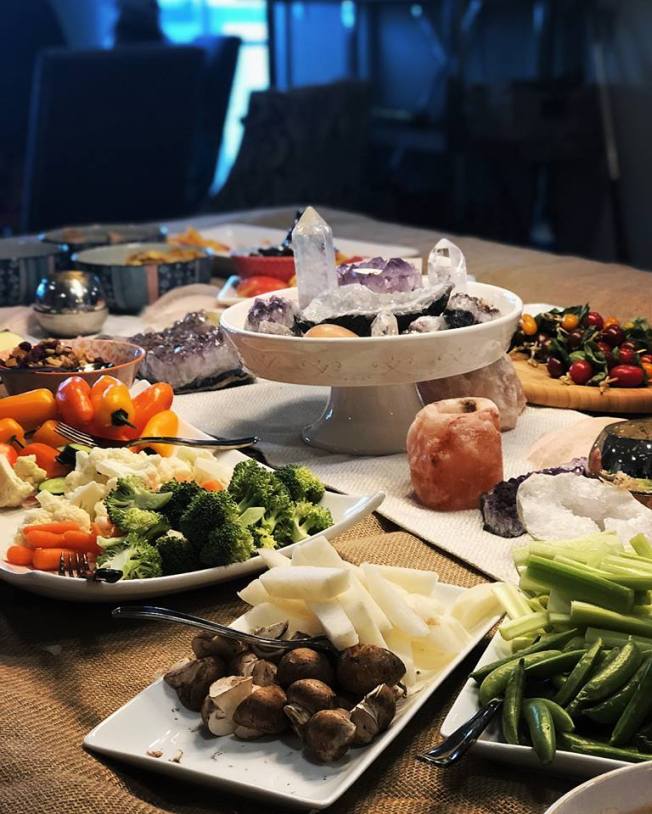
Author: The Coconut Mama
Coconut Fruit Dip – Paleo & Dairy Free!

Ingredients
-
1 Cup of Coconut Cream, cold with water removed. Coconut cream is the cream on top of cold coconut milk (I use this coconut milk). I suggest refrigerating the coconut milk overnight before making this dip. The coconut water will pour out easily leaving the cream on top.
-
1 Tablespoon Raw Honey/Maple Syrup or a few drops of Liquid Stevia
-
1 Teaspoon of Vanilla Extract
Instructions
-
Scoop cold coconut cream into a medium size mixing bowl.
-
Whip up the cream using an electric mixer.
-
Add sweeter and vanilla.
-
Refrigerate dip until ready to serve.
-
This recipe makes approximately 1 cup of dip.
-
Serve with fresh fruit or coconut flour graham crackers. Enjoy!

5 MINUTE CHOCOLATE HUMMUS
-
1½ cup cooked garbanzo beans* (how to soak and cook dry beans) OR 1 can of garbanzo beans, strained and rinsed 3 times
-
3½ – 4 Tbsp maple syrup
-
½ tsp vanilla extract
-
¼ tsp salt
-
4 Tbsp unsweetened baking cocoa
-
2 Tbsp water (optional)
-
In a blender or in a food processor, combine all the ingredients except water, using just 3½ Tbsp of maple syrup.
-
Puree until the mixture is smooth, about 30-60 seconds. Add water 1 Tbsp at a time to create the desired consistency. Taste the chocolate hummus and add remaining maple syrup if desired.
* I’ve tested this recipe with great northern beans, garbanzo beans and black beans. I prefer to use black beans since the “bean” flavor is more subtle and they produced a creamier texture, but you can really use whatever you happen to have.
* If you use canned beans and there’s salt already added, reduce the salt in this recipe to just a pinch.
** If you choose garbanzo beans, remove the skin from the bean first. You can do this by pinching the bean between your thumb and index finger, and the skin will peel off. This helps to create a creamier texture when using garbanzo beans.
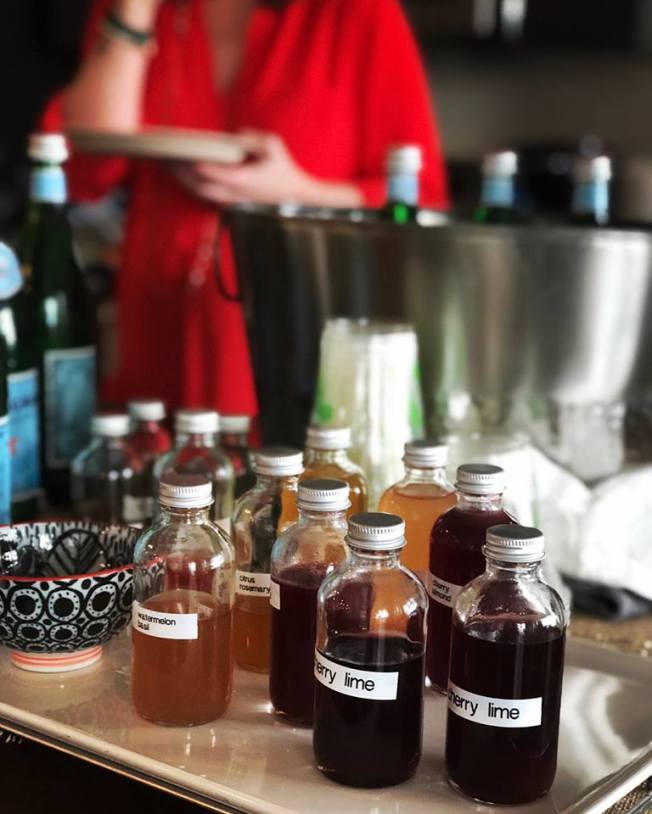
HEALTHY ARTICHOKE DIP [VEGAN, GLUTEN-FREE]

INGREDIENTS
-
1 can organic artichoke hearts (14 ounce can, drained)
-
1 can organic chickpeas (15 ounce can, drained)
-
2 tablespoons organic extra virgin olive oil
-
1 organic lemon (freshly squeezed)
-
2 cloves organic garlic (freshly crushed)
-
4 tablespoons nutritional yeast
-
1 teaspoon organic chili powder
-
1 teaspoon organic dried thyme
-
1/2 – 1 teaspoon pink himalayan salt
PREPARATION
-
Put all ingredients into a blender and blend just long enough until everything is well combined – do not over process (you want to still have small pieces of artichoke).Serve with your favorite chips, crackers or veggies.Enjoy!
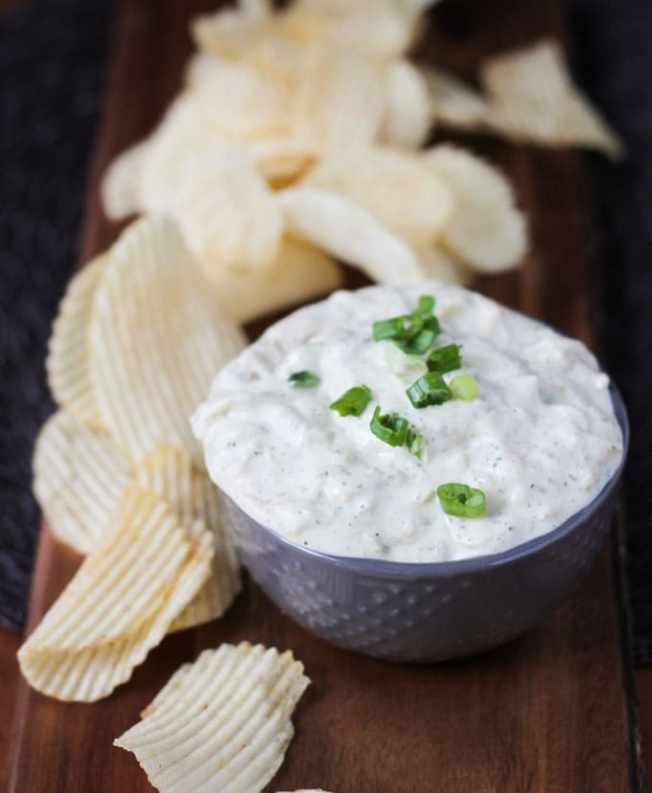
Vegan French Onion Dip with Dill
Prep Time 10 Minutes Cook Time 20 Minutes Total Time 30 Minutes
A dairy free, whole foods version of my favorite French Onion Dip and Dill Dip combined. It’s, of course, great with potato chips, but raw veggies, pita chips or crackers would be delicious as well!
Course: Appetizer, Dip, Snack
Cuisine: dairy free, gluten free, oil free, refined sugar free, vegan
Servings: 8 1/4 cup servings
Calories: 140 kcal
Author: Jenn S.
Ingredients
-
2 large sweet onions (sliced thin or diced) (*see note)
-
1/4 cup vegetable broth
-
-
-
-
1/4 tsp pepper
-
1 1/2 cups raw cashews (soaked several hours) (**see note)
-
-
1 tbsp fresh lemon juice
-
1 tsp dried dill
-
-
Instructions
-
Heat the vegetable broth in a large non-stick skillet over medium-high heat. Add the onions and stir to coat for a minute or two. Turn down the heat to med-low, add the onion powder, garlic powder, 1/2 tsp salt, and pepper, and stir to combine. Let the onions cook about 20 minutes, stirring occasionally. Add a 1 tbsp or 2 of water (or more veggie broth) as necessary if the onions start to stick.
-
Meanwhile, rinse and drain your soaked cashews
-
In the bowl of a food processor, place the cashews, vinegar, lemon juice, dill and salt. Process until it starts to come together. Scrape down the sides of the bowl, add 1/4 cup soy milk and process again until smooth, scraping down the sides of the bowl as necessary. If you feel you need additional liquid add more soy milk 1 tbsp at a time. It should be the consistency of loose cream cheese when it’s done.
-
When the onions are done, turn off the heat and add the cashew mixture to the pan. Pour in the other 1/2 cup soy milk and stir until smooth and creamy. If you like a a dip a thinner consistency, add a little more soy milk.
-
Let cool, then refrigerate until cold.
-
Serve cold with chips, raw veggies or crackers.
Recipe Notes
*You can slice you onions in long thin strips or dice them smaller. It’s really just personal preference. I’ve made it both way and prefer them in a dice, but both ways are good.
**If you are in a hurry and don’t have time to soak your cashews, it will still work. Unsoaked cashews will make more of a cashew butter, than cashew cream, so you may need several extra tablespoons of non-dairy milk (or water would work too) to thin it out.
***I have used Silk Unsweetened Original Cashew Milk in this recipe as well. It is also very tasty…a little sweeter than using soy milk. But, any unsweetened non-dairy milk should work in this recipe.
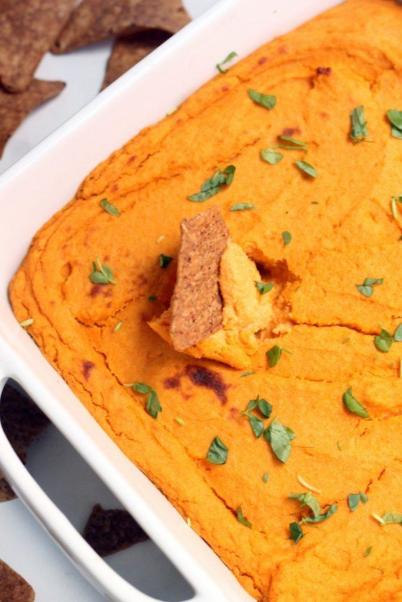
VEGAN BUFFALO CAULIFLOWER DIP
Prep Time 10 Minutes Cook Time 30 Minutes Total Time 40 Minutes
This addictive Vegan Buffalo Cauliflower Dip is super creamy, decadent, and secretly healthy/ You’d never guess it was vegan, gluten-free, and packed with protein. Make it for the big game or as an appetizer for your next dinner party.
Alexis: Alexis
Cuisine: Appetizer
Serves: 12
INGREDIENTS
-
1-12oz bag frozen cauliflower florets, steamed according to package directions
-
1 cup raw cashews, soaked and drained
-
1-15oz can chickpeas, drained and rinsed
-
¾ cup original Frank’s Red Hot sauce
-
½ cup water
-
½ tbsp lemon juice
-
2 tbsp nutritional yeast
-
½ tsp onion powder
-
½ tsp garlic powder
-
Tortilla chips (I love Beanitos Pinto Bean Chips) and veggies, for serving
INSTRUCTIONS
-
Place cashews in a bowl of warm water for at least 30 minutes or overnight.
-
Preheat oven to 375F. Spray an 8x8in baking dish with cooking spray.
-
Add to the bowl of a large food processor the steamed cauliflower, cashews, chickpeas, hot sauce, water, lemon juice, nutritional yeast, onion powder, and garlic powder. Process until the mixture is smooth and creamy, which will take several minutes. Scrape down the bowl as needed.
-
Transfer dip to baking dish. Cover with foil and bake for 20 minutes. Remove foil, turn the oven to broil, (keep the oven open) and cook for 5 minutes longer.
-
Serve with chips or veggies for dipping. I like it hot or cold!
-
Dip will last at least a week in the fridge.

Easy Vegan Vegetable Dip
Credit goes to: Around My Family Table
Ingredients
-
-
3/4-1 package Ranch seasoning mix (non-dairy), vegetable dip or Italian Dressing Mix (or use a homemade version)
-
1/2 avocado
Instructions
-
Combine “sour cream” and Italian dressing mix in a small container (or just right in the sour cream tub). Blend with stick blender or hand blender. Refrigerate several hours before serving.
Easy Hummus Recipe – Better Than Store-bought
Credit goes to: inspired taste.net
- PREP 10 mins
- TOTAL 10 mins
Homemade hummus is very easy to make and it tastes much better than anything you can buy at the store. If you don’t have any tahini, a paste made from sesame seeds, you can try making it yourself (see our Easy Homemade Tahini Recipe) or leave it out. A chickpea purée without it is still quite delicious. Just add more olive oil. Another option is to use a natural unsweetened creamy peanut butter in its place. We love serving this with flatbread — here’s our easy flatbread recipe from scratch.
Makes 6 servings or about 1 1/2 cups
YOU WILL NEED
1 (15-ounce) can chickpeas or 1 1/2 cups (250 grams) cooked chickpeas
1/4 cup (60 ml) fresh lemon juice (1 large lemon)
1/4 cup (60 ml) well-stirred tahini, see our homemade tahini recipe
1 small garlic clove, minced
2 tablespoons (30 ml) extra-virgin olive oil, plus more for serving
1/2 teaspoon ground cumin
Salt to taste
2 to 3 tablespoons (30 to 45 ml) water
Dash ground paprika, for serving
DIRECTIONS
In the bowl of a food processor, combine the tahini and lemon juice and process for 1 minute, scrape the sides and bottom of the bowl then process for 30 seconds more. This extra time helps “whip” or “cream” the tahini, making the hummus smooth and creamy.
Add the olive oil, minced garlic, cumin, and a 1/2 teaspoon of salt to the whipped tahini and lemon juice. Process for 30 seconds, scrape the sides and bottom of the bowl then process another 30 seconds or until well blended.
Open, drain, and rinse the chickpeas. Add half of the chickpeas to the food processor and process for 1 minute. Scrape sides and bottom of the bowl, then add remaining chickpeas and process until thick and quite smooth; 1 to 2 minutes.
Most likely the hummus will be too thick or still have tiny bits of chickpea. To fix this, with the food processor turned on, slowly add 2 to 3 tablespoons of water until you reach the perfect consistency.
Taste for salt and adjust as needed. Serve hummus with a drizzle of olive oil and dash of paprika. Store homemade hummus in an airtight container and refrigerate up to one week.
And on a final note…

…Can you believe, that Emily, seen seated here, who is just about to give birth, made all those amazing appetizers for the party? Look at these two beautiful mamas to be! I was truly amazed and inspired at the amazing spread and variety! I sincerely hope you get a chance to make a few, if not at some point try them all! I promise you will not be disappointed. Your party is bound to be a success…even if most of your guests aren’t vegan.
Thank you to Emily and Jessica! xoxo
SaveSave
SaveSave








